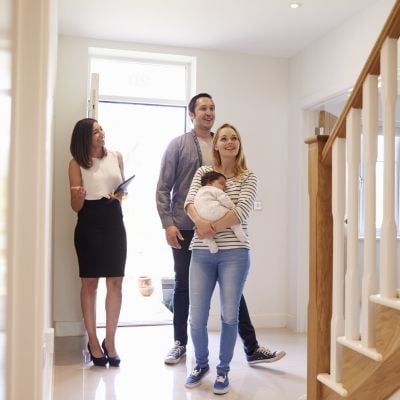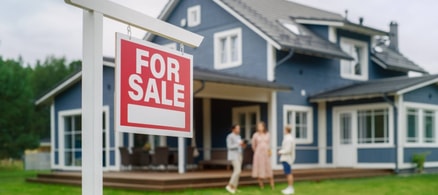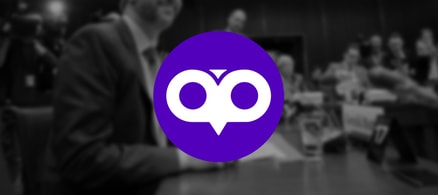What is a reverse mortgage?

While a conventional mortgage requires you to make payments that build equity in your home, a reverse mortgage lets you borrow from that home value.
The typical reverse mortgage allows homeowners to access up to 55% of the current value of their primary residence through a new loan.
That means, for example, if you've paid off the original $500,000 mortgage on your house and the place is now valued at $800,000, you could take out a reverse mortgage for as much as $440,000 — 55% of $800,000.
Reverse mortgages provide a decent amount of repayment flexibility. You can: make interest-only payments; make payments that cover both interest and some of the principal; or you can repay the entire loan in full when you sell the property or move.
If you happen to die before the loan is paid back, your estate will be responsible for repayment.
Reverse mortgages provided by regulated lenders come with a federally mandated "no negative equity guarantee."
“As long as you meet your mortgage obligations, you are guaranteed that you or your estate will never owe more than the fair market value of your property,” explains Deborah Wyman, a reverse mortgage specialist at Verico Fair Mortgage Solutions in Hamilton, Ontario.
More: Current mortgage rates
How much home can you afford?
Whether you're hunting for a new home or looking to refinance your mortgage, knowing how much your new loan might cost you is critical. Use our handy mortgage calculator to help you understand what your payments could look like.
Get StartedHow do I apply for a reverse mortgage?

Only a few financial institutions officially offer reverse mortgages in Canada, including the previously mentioned HomeEquity Bank, with its “CHIP” reverse mortgages, and Equitable Bank, which offers reverse mortgages in select major cities.
But you don’t have to go directly to the banks to apply for your loan. Instead, you can get your reverse mortgage online, through a digital mortgage advisory like Homewise.
With Homewise, you fill out a brief application, then the company's advisors go to work negotiating with the banks on your behalf to get you the best deal on your loan.
To be eligible for a reverse mortgage, you and everyone listed on your home’s title must be 55 or older, according to Canadian financial regulations.
Once your loan is approved, you have the choice of receiving the money as a single lump-sum payment, or you can access some of your equity upfront and dip into it periodically over time.
A lender will need to consider a few important factors before determining the final value of your reverse mortgage, including: the age of all the people registered on the title of the home; where you live; and your home’s condition, type and appraised value.
What are the benefits of a reverse mortgage?

Taking out a reverse mortgage will leave you with less equity in your home, which can be a tough pill for homeowners to swallow. But it’s a strategy that comes with considerable benefits:
- You retain possession of a valuable, appreciating asset.
- You avoid having to move and change neighbourhoods, which can be a painful process.
- A reverse mortgage can be easier for an elderly homeowner to obtain than a line of credit or a refinance loan.
- You can significantly increase your cash flow.
That last point cannot be stressed enough. A reverse mortgage provides cash you would not have access to otherwise, and the money can be used any way you like.
Maybe you need cash for something as straightforward as a family vacation, or a badly needed new roof for your home.
The funds also could be used to pay for a grandchild’s education, help get one of your adult children out of his own uncomfortable financial situation, or simply provide you with a more comfortable, stable retirement.
Grow Your Savings Effortlessly with Moka
Automate your savings with every purchase and watch your money multiply. Moka rounds up your transactions and invests the spare change. Start building wealth effortlessly today. Join thousands of Canadians embracing financial freedom with Moka
Sign up nowWhy now is a good time to consider a reverse mortgage

Reverse mortgages have become more appealing because of Canada’s skyrocketing housing prices. Homeowners, even those who need cash badly, don’t want to sell their houses and risk missing out on any future appreciation.
That's a legitimate concern, given the Canadian housing market's extreme supply-demand imbalance — which isn’t likely to be remedied anytime soon.
A reverse mortgage allows homeowners to continue benefiting from surging home values. In fact, properties in many Canadian cities are appreciating at levels that dwarf the interest rates attached to most reverse mortgages.
That means while you may sacrifice some of your equity by taking out a reverse mortgage, there’s a chance you’ll easily earn some of that back.
Losing out on appreciation isn’t the only reason homeowners may choose a reverse mortgage over selling.
“The big problem with selling is, where do you go next?" says John Vo of Spicer Vo Mortgages in Halifax, Nova Scotia. “Maybe you make a lot of money on the sale of the home, but now you have to spend a lot of money to get another home or pay rent, which has also increased."
Reverse mortgages come with costs that may include a set-up fee and a home appraisal charge. Taking out one of these loans can be a big decision, so it's smart to seek out professional advice from a mortgage specialist to help you evaluate the pros and cons.
Fill in a little information about yourself below so Homewise and its team of advisors and lender partners can provide a free overview into how much you're eligible to borrow. Don't worry, you won't be locked into anything.
Sponsored
You're 5 minutes away from the best mortgage
Searching for your perfect mortgage shouldn’t be hard. Homewise is an online brokerage that will negotiate on your behalf with more than 30 big banks and other lenders, completely free, and it only takes five minutes to apply.
If you're in the market for a new mortgage, or if you're looking to refinance before interest rates rise again, go to Homewise now and answer a few simple questions to get started.







